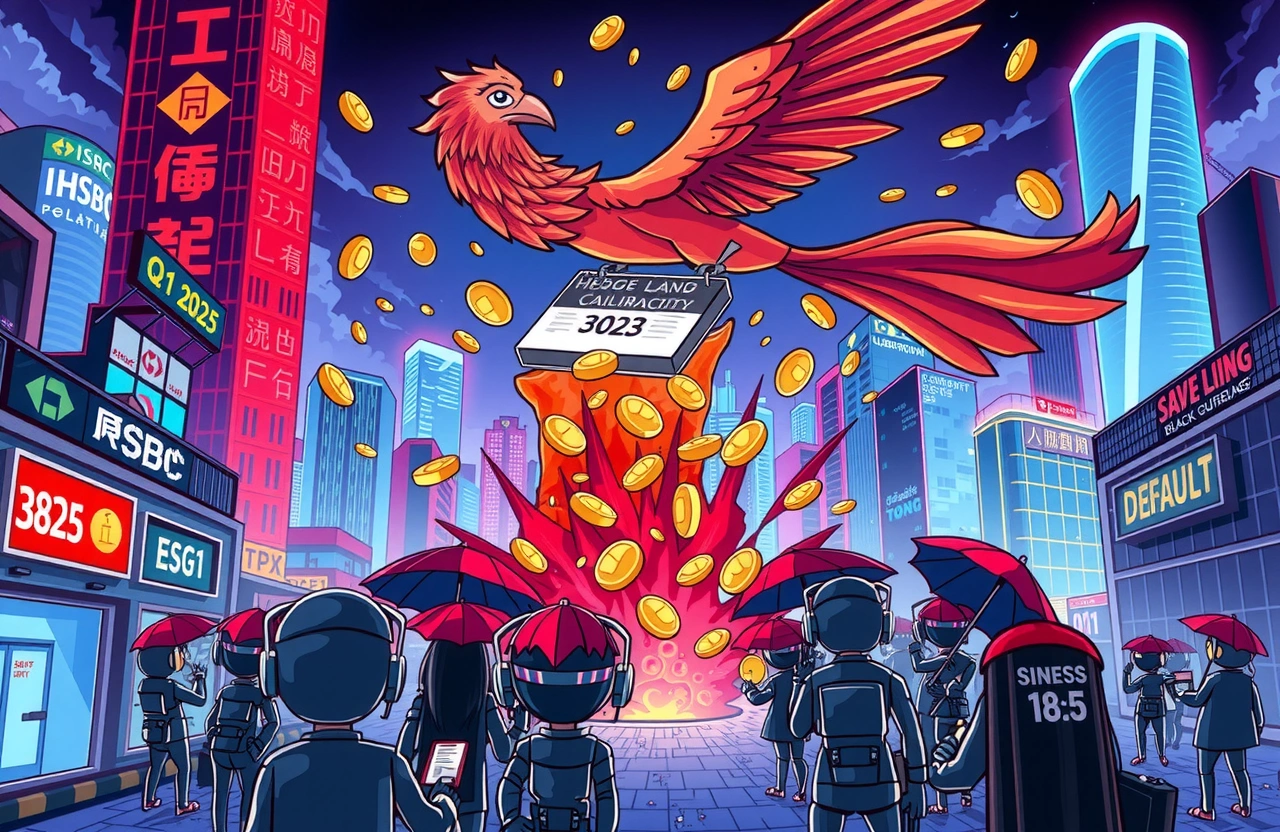The Unseen Tremor Rocks Hong Kong’s Financial District
In early 2025, Hong Kong’s bustling trading floors experienced a seismic shift that left veteran investors scrambling. Market indices plummeted without warning as $45 billion evaporated from portfolios in just 72 hours. This unexpected market shockwave exposed hidden vulnerabilities beneath Hong Kong’s glittering financial facade—merging geopolitical tensions with regulatory changes that had quietly been building pressure. Though analysts had monitored housing bubbles and tech valuations, few predicted how these forces would violently converge.
The tremors originated from three simultaneous phenomena: Mainland China’s unexpected policy pivot on offshore investments that redirected capital flows, new financial surveillance measures spooking foreign institutions, and blockchain listing rules that destabilized Hong Kong’s emerging crypto hub ambitions. When combined, they created the perfect market shockwave that rewrote the rules overnight. Retail investors watched helplessly as blue-chip stocks considered bedrock-safe suddenly became turbulence leaders.
Anatomy of the Market Shockwave Triggers
Understanding the mechanics behind Hong Kong’s financial earthquake requires dissecting the precise events that caused the rupture.
The Triple Regulatory Earthquake
Three regulatory changes struck markets like tectonic plates grinding against each other:
– Reclassification of dual-class share structures that instantly downgraded 18% of Hang Seng Index constituents
– New corporate disclosure requirements linking mainland asset verification (with 45-day compliance deadlines)
– Financial Action Task Force guidelines for crypto exchanges freezing $3.2B in digital assets overnight
Hong Kong Monetary Authority data reveals average compliance costs surged 80% post-regulation, forcing fund managers into rapid repositioning. Goldman Sachs Asia reported significant capital flight in Q1 2025 (HKEX filings), confirming the shockwave’s depth.
Domino Effects Across Asset Classes
The market shockwave propagated uniquely across sectors with fascinating ripple patterns:
Property REITs collapsed 23% as mainland developers missed debt payments, while tech stocks saw brutal divergence—semiconductor firms gained as platform giants bled valuations. Currency markets experienced unprecedented VIX spikes, with HKD-USD swaps hitting 15-year volatility highs. This market shockwave demonstrated how Hong Kong’s unique position as China’s financial window created amplified consequences for global portfolios.
Sector-Specific Carnage and Unexpected Winners
Not all sectors reacted equally to the market turbulence. The shockwave created clear casualties while elevating overlooked assets.
Real Estate’s Brutal Reality Check
Hong Kong property—long considered the world’s safest concrete—revealed alarming cracks. High-profile defaults included:
– Sunshine Land Holdings: $850m bond payment missed
– Harbourfront Development: Project cancellations totaling 11 towers
– Luxury retail REITs: Vacancy rates spiked to 28% in Causeway Bay
Property consultancy CBRE Hong Kong reported mainland buyer withdrawals from 45% of luxury contracts, signaling deeper demand erosion.
Stealth Beneficiaries Emerging
Market shockwave conditions unexpectedly boosted certain niches:
– Defense contractors saw 34% inflows amid regional tensions
– Gold vault operators expanded capacity as bullion demand surged 210%
– Insurtech firms facilitating portfolio protection doubled valuations
For instance, Hong Kong-based security firm Shield Capital achieved record trading volume for its crisis hedging products within a week.
Investor Survival Strategies for Ongoing Turbulence
While markets remain volatile, pragmatic investors adopt tactical positions turning uncertainty into advantage.
Portfolio Fortification Essentials
Financial advisors now urge six defensive maneuvers:
1. Increase cash buffers to 15-20% of liquid assets
2. Rotate into crisis-resistant sectors: healthcare, utilities, commodities
3. Implement automatic circuit breakers at 7% position declines
4. Diversify into ASEAN markets reducing China concentration
5. Hedge currency exposure through HKD-USD options
6. Schedule monthly regulatory briefings via compliance firms
Remember that every market shockwave creates buying opportunities—distressed property REITs now offer 9-12% yields for patient capital.
Technological Early-Warning Systems
Ivy Asset Management now deploys proprietary shockwave detection algorithms tracking:
– Regulatory document keyword density shifts
– Cross-border money flow anomalies
– Political committee member rotations
– Social media sentiment velocity
As BNP Paribas APAC CIO Elena Zhu notes: ‘This market shockwave taught us that legal text mining precedes price movements by 18-72 hours.’
Policy Reset and Path Forward
Hong Kong authorities responded with unprecedented countermeasures aiming to restore confidence and modernization.
Stabilization Toolkit Deployed
The HKMA unleashed a five-point recovery package:
– $25B liquidity facility for brokerages
– Transaction tax suspension for three years
– Dual-class share grandfathering extension
– Fast-track approvals for SPAC listings
– Green bond guarantees attracting ESG funds
Additionally, the Securities Futures Commission launched an emergency taskforce restructuring corporate governance standards. Analysts find parallels to Singapore’s post-global crisis reforms that ultimately strengthened oversight without strangled growth.
Reimagining Hong Kong’s Financial Identity
Beyond damage control, Hong Kong leverages its market shockwave to pioneer transformations:
– Positioning as Asia’s climate finance hub with carbon trading innovations
– Developing regional arbitration for blockchain disputes
– Attracting semiconductor design firms relocating from conflict zones
HSBC’s latest Gateway Report indicates 72% of multinationals still consider Hong Kong indispensable despite recent events.
Turning Crisis into Strategic Advantage
Beneath Hong Kong’s disrupted markets lies opportunity visible to prepared investors. Historical analysis shows post-shock recovery cycles accelerating with each market upheaval—2015’s Shanghai correction saw 18-month rebounds versus 2020’s pandemic crash requiring just 11 months. Current valuations place prime commercial real estate at 2018 levels while selective equities trade below tangible book value.
The market shockwave ultimately revealed Hong Kong’s resilient core: transparent legal systems, deep liquidity pools, and unparalleled regional connectivity. Forward-thinking investors already reposition through dual-pronged strategies: capturing undervalued assets while building structural hedges against latent uncertainties. Schedule a portfolio triage with licensed advisors specializing in Hong Kong volatility within the next 30 days—being proactive transforms seismic threats into foundations for the next growth cycle.



